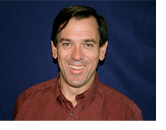 Note from the Chief Executive Officer Note from the Chief Executive Officer
Brokering Our Renewable Energy Future Increasing the use of renewable energy is a national priority, and the West has abundant wind and solar energy resources. But, as energy companies seek to fulfill the green energy promise, they are finding that producing clean power is one thing; getting it to customers is quite another matter. No one wants a transmission line in or near their backyard-or across their farm or ranch, or through pristine public lands or wildlife habitat. The stalemate that often results from conflicts over transmission lines can delay and even derail vital progress towards a more sustainable energy future. The Sonoran Institute has been hard at work with county officials in Montana and Idaho using our expertise on local engagement and mapping technologies to build trust, and to improve understanding of the impacts of proposed transmission lines. The goal is more renewable energy that is delivered with the least negative impact on wildlife habitat, scenic vistas, communities, farmland, and other environmental values. Building Trust Requires Local Engagement NorthWestern Energy is seeking to build the so-called Mountain States Transmission Intertie (MSTI), a massive transmission line that would run about 430 miles from Townsend, Montana, to Jerome, Idaho. The line would help carry power produced by wind and other new sources of energy generated in Montana to major population centers in the West. The utility's plan for the new line initially met with heavy resistance. Faced with making a decision about the line, elected officials in Jefferson and Madison counties were finding it difficult to sort through the many complicated siting options. Recognizing an opportunity to both promote renewable energy and create a model for minimizing the impacts of transmission lines, the Institute helped launch the MSTI Review Project, a collaborative effort of local governments and stakeholder groups, formed to help address these questions. Its goals are to better understand MSTI's wildlife and economic impacts and to analyze route options in a way that incorporates the values and concerns of the affected communities. A Voice for Local Communities While our partners assessed fiscal impacts and mapped routes designed to protect environmental interests, the Sonoran Institute gave local communities a voice. Cameron Ellis, from the Institute's Bozeman office, facilitated a series of "mapping workshops," in which county officials ranked variables they identified as important to their communities, such as property ownership, agriculture, scenic views, wildlife habitat, and many others. The Institute then generated "community values" maps showing the routes that best reflect local opinions. "The Institute's efforts to model community values in a substantive, objective way is unique," says Cameron. "It's a great way for us to partner with other organizations to complement all the important environmental and wildlife research they are doing. The reality is you can't get to the table to talk about wildlife if people feel that their communities and economic wellbeing are being threatened." A Model for Informed Decision-Making Overall, the results of the community values mapping process showed that local communities think that new infrastructure (towers and wires) should be placed near existing infrastructure as much as possible. The MSTI Review Project is now finalizing its report, and county commissioners will be able to use the models to make informed comments on the routes that come out of the pending Environmental Impact Statement. Jefferson County, Montana commissioner Leonard Wortman expressed his views in a local newspaper, "We have proven the value of this type of stakeholder process with county commissioners, and hope it will serve as a model for other projects across the West." Bottom line; local engagement works. Finding creative ways to give citizens a voice in projects that impact their communities is a vital part of community building in the West. Local collaboration may also be the key to brokering our renewable energy future.
Sincerely, 
Luther Propst |